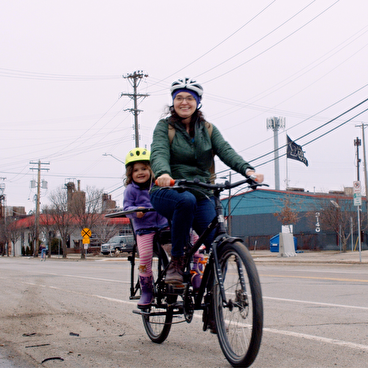
United by Transportation

Yingling Fan, Professor, Humphrey School of Public Affairs
Area of Expertise: Transportation Planning & Policy
The motto of the 2020 Tokyo Summer Olympics was “United by Emotion.” It emphasized the idea that sport can foster shared emotions and passions to bring people together and connect them beyond their differences. As people gather, pass by, and intersect in our transportation systems, I cannot help but wonder how transportation could likewise function to instill shared experiences and unite people of diverse backgrounds.
This idea of uniting and connecting people through transportation is not new. Willam H. Whyte, who is considered a forefather of the placemaking movement, said in his 1988 book City: Rediscovering the Center, “The street is the river of life of the city, the place where we come together, the pathway to the center.” But much to our dismay, today’s transportation systems often prioritize system efficiency over human experience, failing to foster empathy and connections.
How can we chart the future of mobility so that transportation helps to unite rather than divide our communities? How can we ensure that innovations in transportation enhance the quality of life for all population groups rather than favoring those who need the least help?

Specifically, the spacious landscaped highways that dominate our transportation system have functioned as instruments of isolation and exclusion. When they were built through cities in the 1950s and 1960s, they physically destroyed many low-income minority neighborhoods with almost surgical precision. In addition, these highways made it easier for middle- and upper-class white Americans to zip to their suburban homes in private automobiles without seeing or knowing the lives of their lower-class or non-white neighbors. Far from uniting us, automobiles and highways exacerbated the race and class divide in American cities.
How can we chart the future of mobility so that transportation helps to unite rather than divide our communities? How can we ensure that innovations in transportation enhance the quality of life for all population groups rather than favoring those who need the least help?
First, we ought to conceptualize and operationalize transportation infrastructure as an essential public space. The public nature of transportation infrastructure has increasingly diminished as a result of traffic control and management measures. With the well-established purpose of roadways to maximize speed and efficiency, social interactions have been restricted, individual liberties have been constrained, and access to public rights-of-way has been controlled and limited in U.S. transportation systems. These trends are unlikely to be reversed by technological advancements. For example, although ride-hailing apps in theory would reduce car ownership, in reality they have made urban residents more dependent on private vehicles. The more private vehicles—even shared ones—we have on our public roads, the less space we have to prioritize public transportation. We need policy determination and interventions to reclaim the “publicness” of transportation. We must employ normative thinking, asking what ought to be rather than what actually is. That means that transportation infrastructure space ought to be maintained as a publicly accessible space for people to come together.
Second, we ought to center the lived experience of underserved communities to deconstruct the systemic inequities embedded in our transportation systems. Just like other aspects of our cities and regions, transportation is socially constructed by dominant groups. This is why women and people of color tend to feel less safe and less happy when making their daily trips compared to white men. This is also why elderly people and people with disabilities have fewer transportation options than their younger and healthier counterparts. We ought to explicitly discuss and make visible those groups underserved by our existing transportation systems. This would require substantially more efforts to study the lived experiences of these communities and more resources to improve alternative transportation modes and options.
Innovation is inherently about taking risks. As we take a leap of faith for the future of transportation, it is critical for us to make normative analysis and determine what is desirable and what is not. Much of transportation planning is an ethical inquiry. Enhancing the publicness of transportation and centering the lives of those who need help most have timeless values for our transportation future.